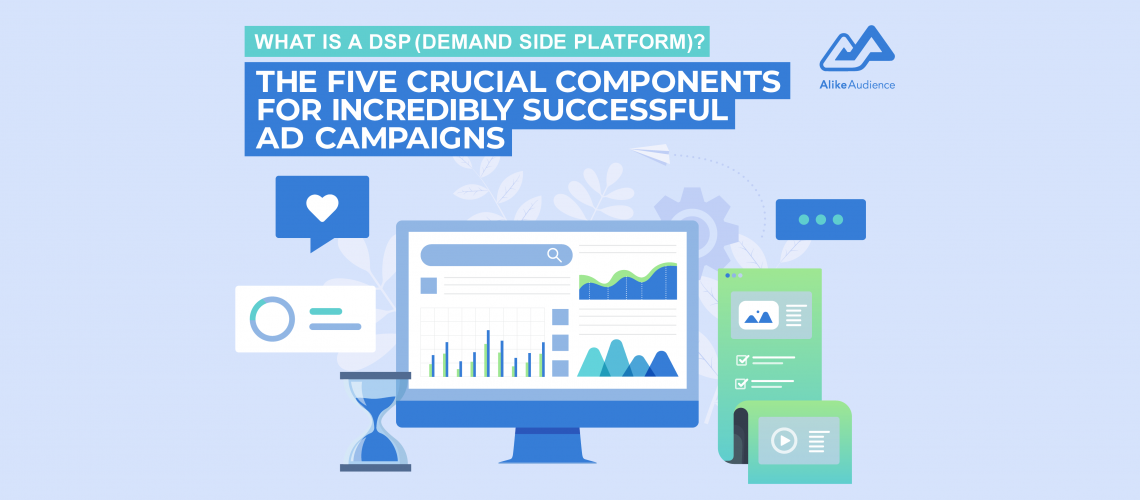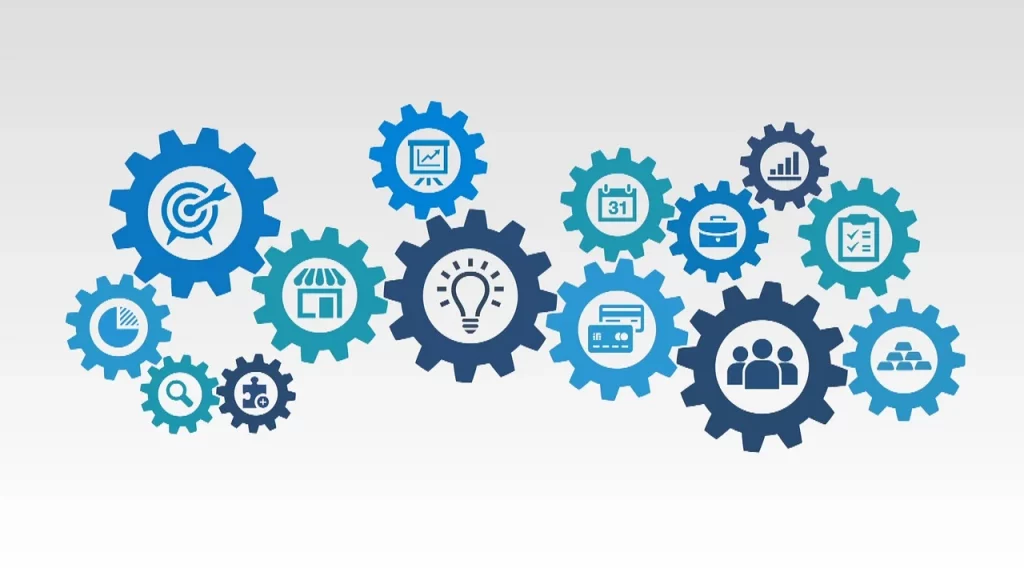If you’re a marketer who wants to launch a programmatic advertising campaign, you might be wondering “What is a DSP?”. The programmatic world is filled with acronyms and jargons, and we’ll explain what one of them, DSP, means in this article.
You’ll also find out what kind of features you should look for in a DSP to drive better results from your programmatic campaigns. Let’s get into it.
What is a DSP in Programmatic Advertising?
A demand-side platform (DSP) is one of three main components that make up the programmatic buying ecosystem, apart from supply-side platforms (SSPs) and ad exchangers.
A DSP is an automated software where you can access and purchase ad inventory across various digital environments, and run programmatic campaigns on multiple media sources and content publishers.
As a centralized buying platform, you can buy video, mobile, search, and display ads on a DSP. Examples include MediaMath, the TradeDesk, or Knorex.
Instead of having to manually contact thousands of publishers with numerous advertising offers, you can bid on multiple networks in real-time on demand-side platforms. This means you can quickly set up programmatic ad campaigns and manage them with ease.
DSPs are also a full self-service interface, giving you complete control over purchasing ad spaces, selecting target audiences, tracking ads, and measuring performance of your programmatic campaigns.
How do you choose a DSP to buy media on?
Over the past few years, many top DSPs have expanded substantially. This is largely due to the increasing integration of connected TV (CTV) and over-the-top (OTT), which displayed a 330% increase in programmatic advertising transactions in 2019.
When deciding which demand-side platform to work with, your end goal should be the ability to access all ad inventory and to judge it fairly.
We looked at different media buying platforms available in the market and compiled five key components of the ultimate DSP that can fuel high-performing programmatic campaigns:
#1: Offers a Data Management Platform (DMP)
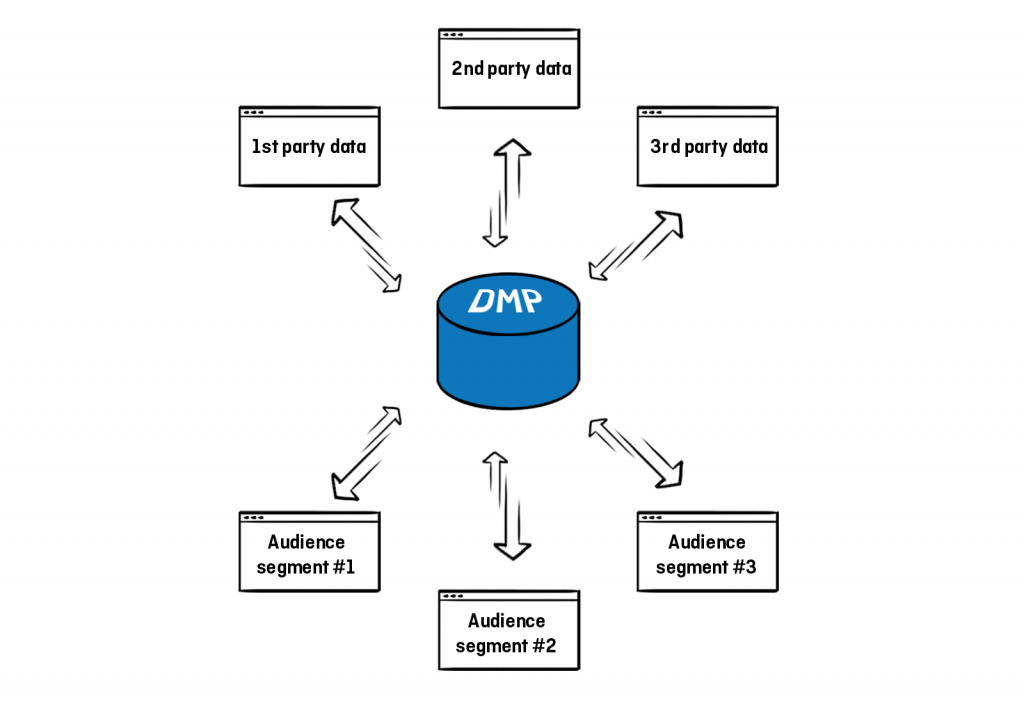
Programmatic advertising gives you the opportunity to access billions of customers on the internet. However, not all of them are going to engage with your brand or buy your product, and it’d be a waste of your advertising dollars to try to reach them all.
Before you start buying media, you need to nail down which customers are going to be your most profitable ones to drive a high return on investment.
A data management platform (DMP) integrated into a DSP can give you the ability to know who your target customers are and to learn more about their purchase intent and behaviors.
A DMP collects, stores, and organizes 1st, 2nd, and 3rd party data from different sources, such as mobile apps, browsers, websites, and CTV apps. It then analyzes the collected data and generates insights, giving you a much clearer picture of your customers, target audience, and strategies across different platforms.
You can leverage the data from the DMP to identify the demographic, behavioral, psychographic, and location information of your target audience. Then, build a group of customers from this data and focus on it solely as the foundation for everything you do throughout the media buying process.
For instance, if you’re a fashion sneaker brand, you can analyze the data from a DMP to build your target audience. Then, you can plug this data into the demand-side platform so you can start buying ads aimed at the demographics.
You can also work with data vendors like AlikeAudience in the open internet to obtain reliable and privacy-compliant audience segments at scale. AlikeAudience offers over 7000 audience segments across 13 countries in CPG, E-commerce, Travel, Entertainment, B2B, and Finance industries.
We create our audience segments by matching exclusive credit card data with 1.1billion mobile signals, such as location data. If you need custom audience segments with adjustable lookalike windows, we’ve got you covered too. Book a data strategy session with us here.
#2: Supports omnichannel and global marketing strategies
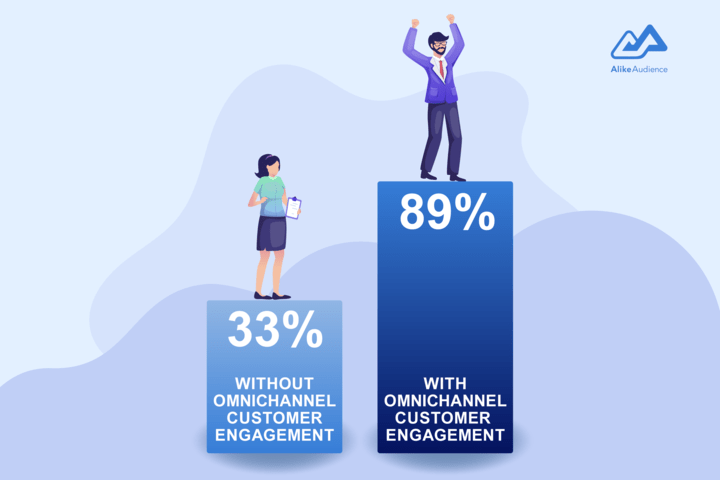
Research shows that brands that utilize omnichannel engagement strategies retain on average of 89% of their customers, while those with weaker omnichannel engagement displayed a far lower retention rate of 33%.
To create an omnichannel programmatic strategy, you need to be able to advertise across various channels in different geographic locations.
Your demand-side platform needs to be open and interoperable with lots of other tools on the backend so you can advertise across different channels in any geographical location. For instance, if you wanted to advertise on CTV in Denver and also in Los Angeles, your DSP should support this.
Rather than focusing solely on social, video, or display, a DSP must offer the ability to advertise on every channel in every geography.
However, the DSP doesn’t need to have everything built inside it, but just be able to connect with different backend systems of agencies and platforms quickly and easily. An example of this is the recent integration of The Trade Desk with TikTok and Amazon Fire.
In addition, taking all of your insights across every media channel from one geography to another is crucial in obtaining a broader understanding of your buying process.
The DSP should also allow you to manage the locations you’re advertising on and analyze insights seamlessly. This is the only way to ensure you don’t bombard potential or current customers with the same ad across multiple mediums.
#3: AI-Driven planning and measuring

As the media buying process evolves into digital, planning becomes digital too since that’s where all the data is. One of the main responsibilities of a DSP is to provide data so you can plan how to deliver the right ads to the right customers at the right time.
All the data you use in media buying is also relevant when you’re planning. When deciding on how to divide a yearly budget, for instance, it’s important to combine all the insights you gain with what you will eventually deploy during buying.
There are currently 10 million ads per second on the internet. Let’s say you need to buy twenty of those ads to fill a $100,000 advertising budget. The challenge is to narrow down that gap from 10 million to not just any twenty ads, but the ‘right’ twenty ads to buy.
Without a DSP, there’d be many potential vendors to work with, leading to a complicated puzzle that marketers need to put together to reach your target audience.
The ability to be specific about which ads can be bought is a key component demand-side platforms must provide. A DSP with AI built in can analyze past performance campaigns or hypotheses from traders to pinpoint which ad spaces would bring in a high ROI.
A recent study found that marketers incorporating AI in their campaigns increased sales by 52%, with customer retention growing 51%.
#4: Generates insights and supports forecasting
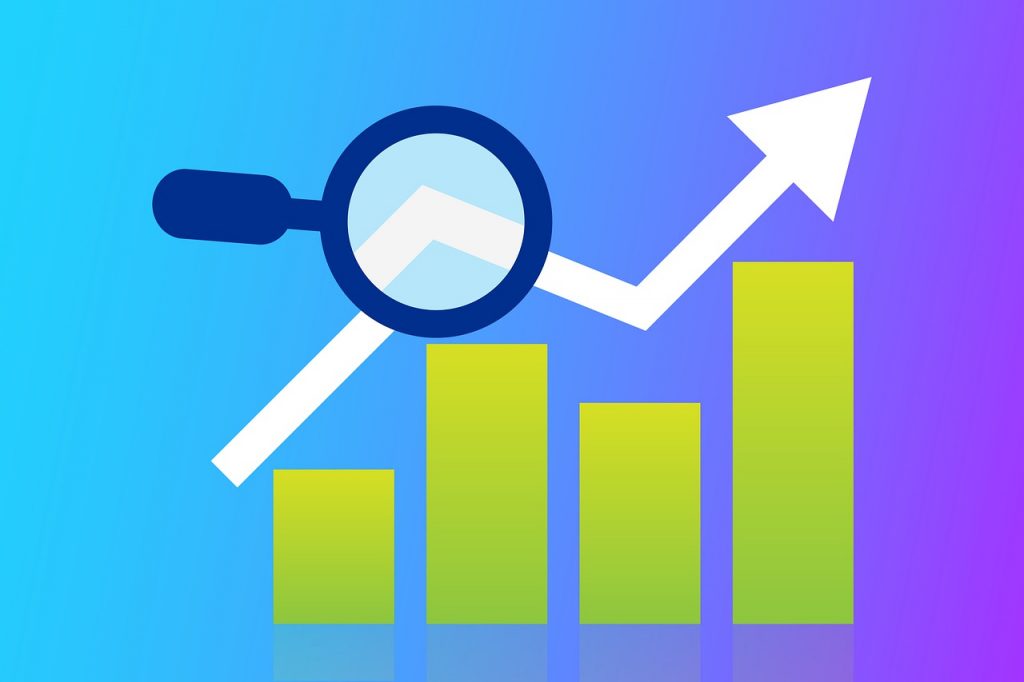
A critical job of the demand-side platform is to produce insights.
If you’re running a campaign and find out your target audience isn’t responding to your products in the way you thought they should, a walled garden may not be able to provide the accurate, up-to-speed interpretation of results you need to better understand your market.
However, on a DSP, it’s not only possible to buy media precisely, but also to forecast a lot about what lies ahead.
This means that if you already decided who your campaign’s target audience is, you can now look across all insights – like which types of sites you should be using, which geographies you should focus on, or the relative effect of audio versus video ads – and predict which of these functions will work best for your campaign.
In today’s ever-changing digital marketplace, there are large amounts of data for marketers to analyze and measure – from how many audiences an ad reached, how long it was viewed, the time users spent on a website, or how many people bought a particular product.
Look for a DSP that can compile the most valuable insights you need to decide which ad spaces can deliver your message to the target audience and generate the best ROI.
#5: Provides a comprehensive, objective overview of marketing strategies
As marketers, you must always have your eyes open and carry an objective mindset to all possible marketing strategies on the table.
If you can understand the relative performance of everything that’s available, that’s where your brand can do its best work when planning media campaigns.
However, most walled gardens will tell you they’re the best place to spend money, but in reality, you’re left trying to put the pieces together. Walled gardens represent both buyers and sellers, and it’s impossible to do what’s best for both of them.
This lack of objectivity continues to shape the media landscape as the market becomes increasingly competitive. It’s difficult to truly know whether a walled garden is being biased or not in their ad measurements and reports.
Whereas, an objective DSP that represents your best interests would never have any reason to misstate performance or have differing methodologies to make it confusing.
You can always expect better results and performance from an independent DSP which is fully aligned to work solely for your brand’s interests. You obtain more insights and benefits, as opposed to having a walled garden trying to serve too many masters.
Conclusion
In this article, we covered the five important components of demand-side platforms and outlined how accessing ad inventory across different digital environments can streamline repetitive tasks and manage your advertising campaigns with ease.
To determine which ad spaces you should buy, leverage a data vendor like AlikeAudience to uncover your target audiences. We are a leader in ad management solutions in the APAC region, and have extensive experience in helping advertisers drive reach and engagement with audience segments at scale, CTV strategies, and other data solutions across various industries.
Our partnerships with renowned ad tech companies like The Trade Desk and LiveRamp help drive AlikeAudience’s goal of equipping advertisers with the tools necessary to achieve high-performing, next-generation results on their programmatic campaigns.
Contact our data strategist today or sign up for our email for more insights.

